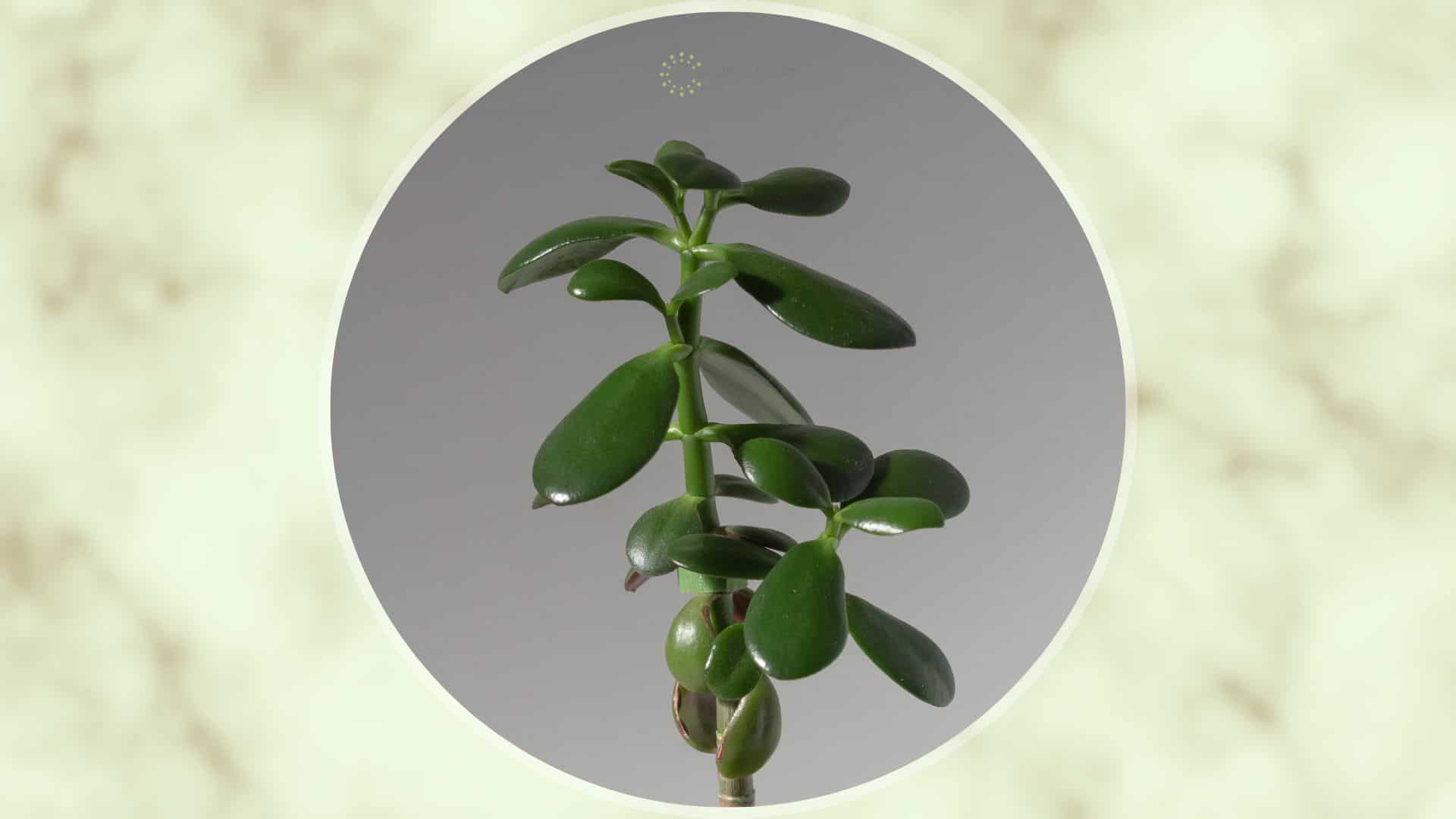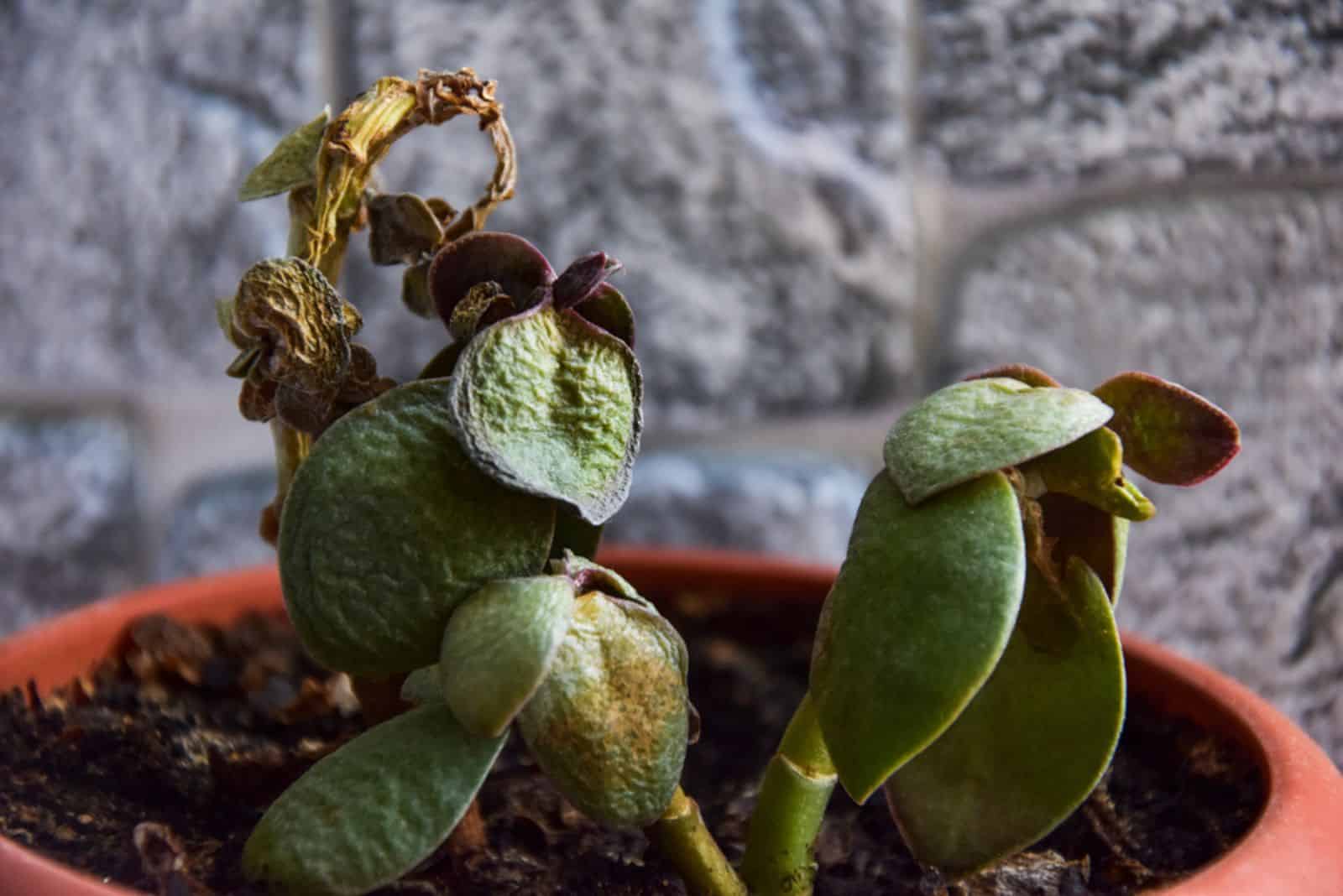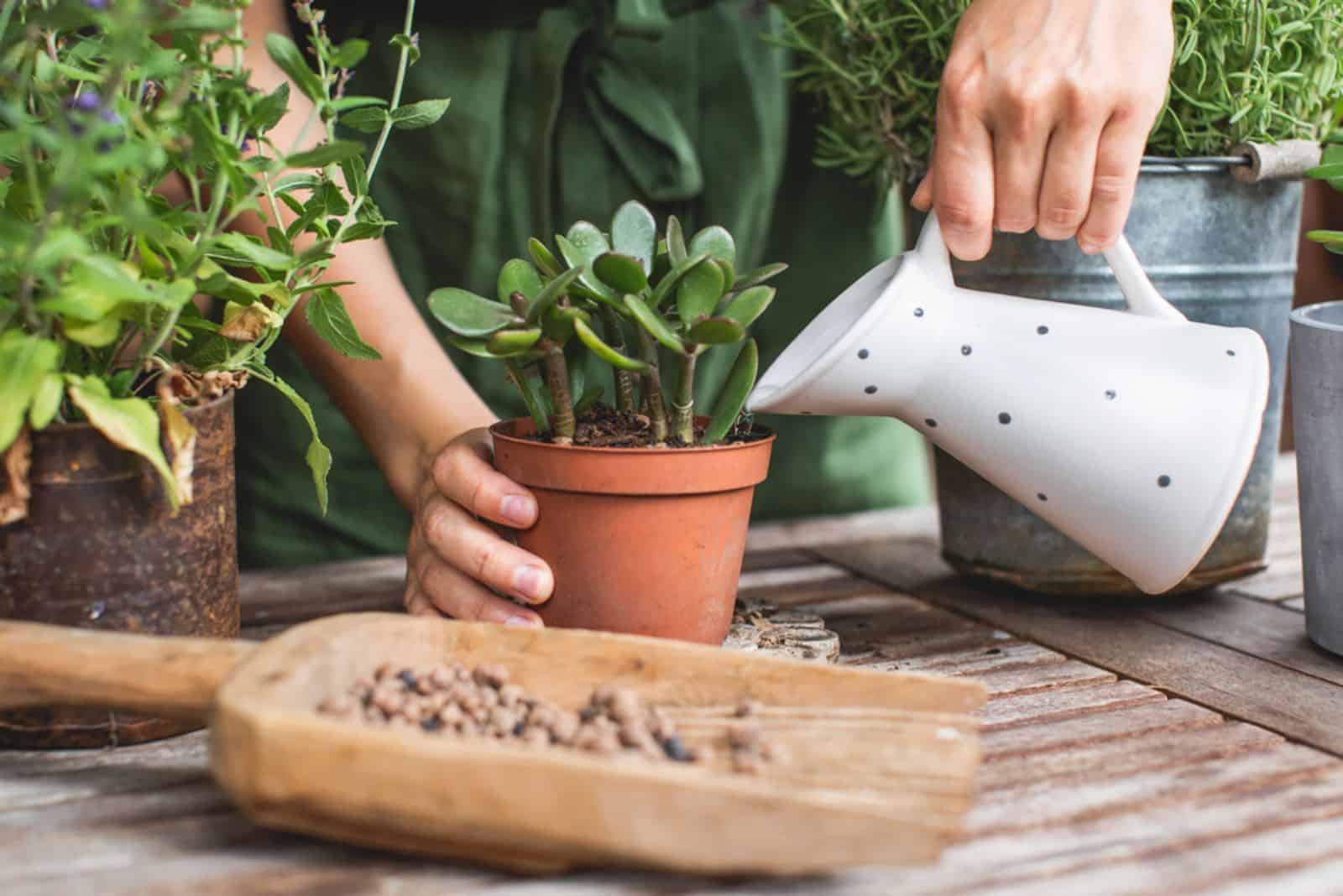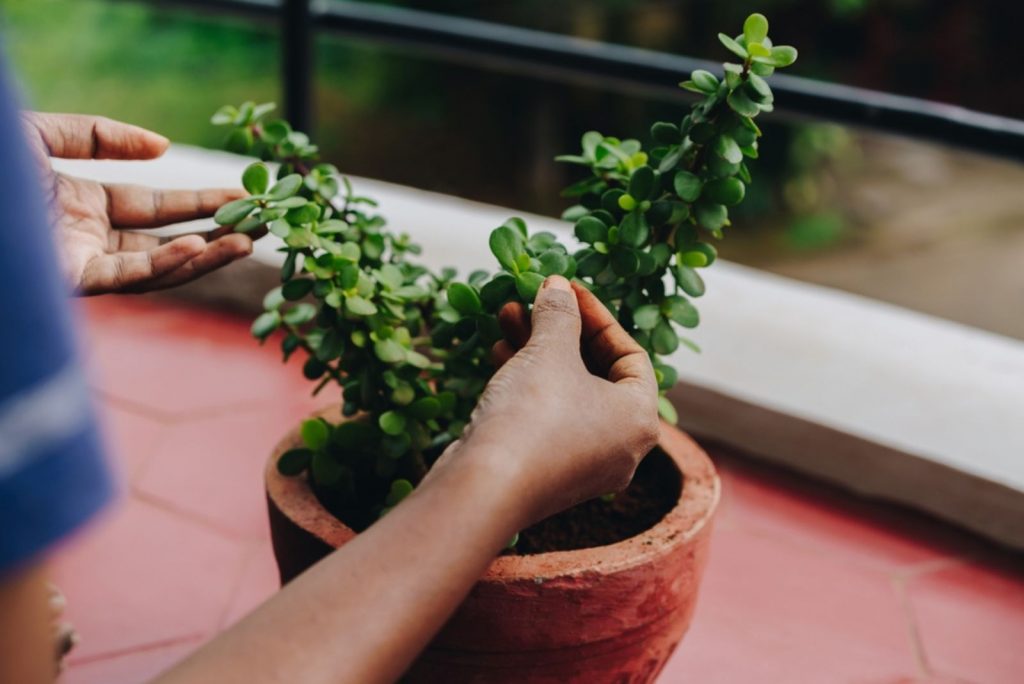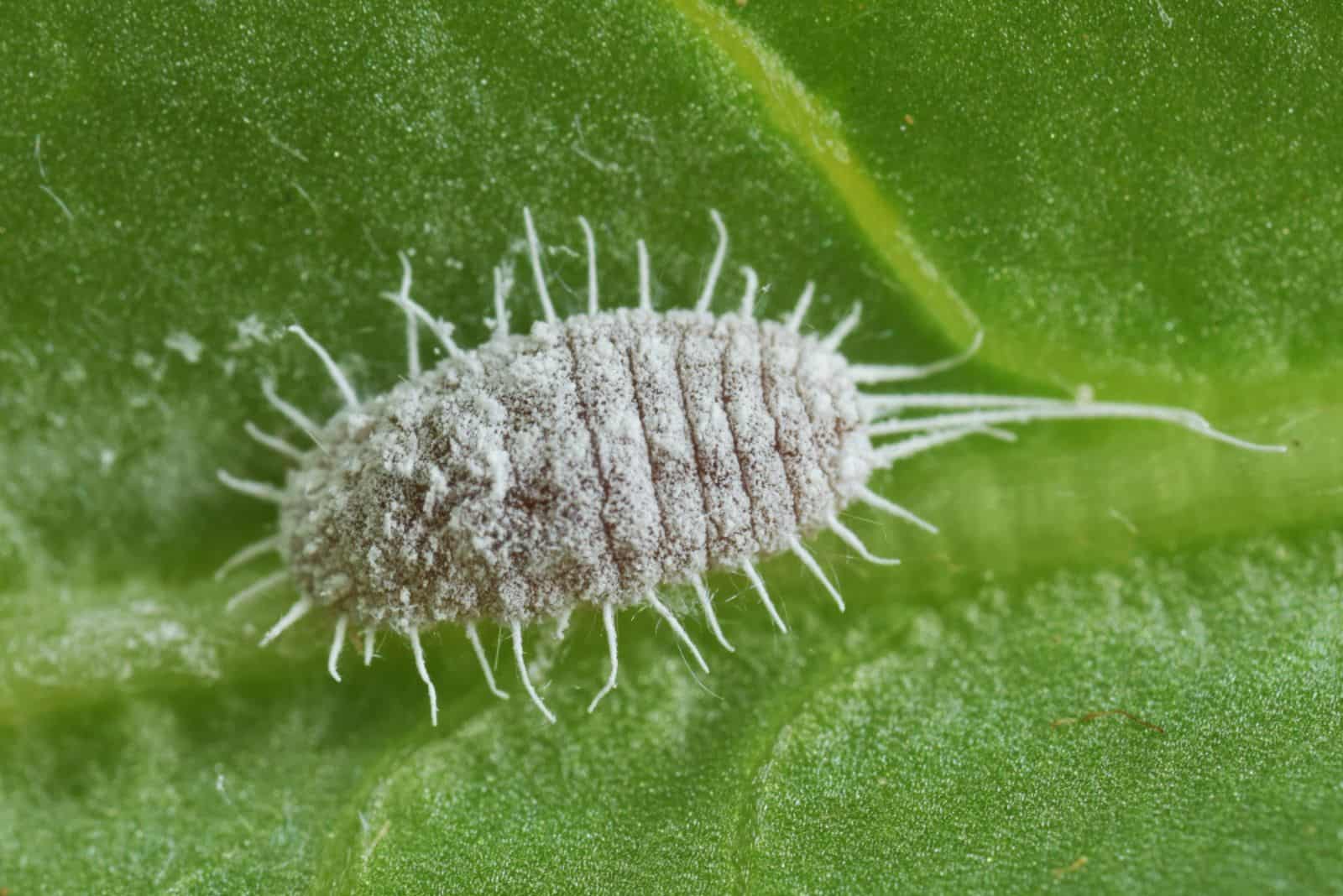One of the trickiest things about plants is recognizing if a change is due to their natural life cycle or if something bad is going on. For instance, jade plants have a reputation as being the easiest-to-maintain plants, so if some change occurs, we often think it’s nothing.
Well, in most cases it is nothing; perhaps the plant is adjusting to a new environment, is entering dormancy, or shedding old leaves, which is completely normal.
Recently I got a question about the jade plant dropping leaves. Although this often happens as a part of the jade plant life cycle, you should inspect your plant closely because it may also be a sign of a dangerous condition that could damage your plant.
In this article, I’ll show you the most frequent causes of leaf dropping in jade plants and how to fix the issue.
Let’s get started!
Jade Plant Dropping Leaves: Causes + Solutions
It’s common for novice gardeners to start treating problems without first determining the cause. The solution doesn’t always include cutting or repotting!
If your Crassula ovata plant is dropping leaves, here are some possible reasons:
• Overwatering
• Underwatering
• Not enough light
• Incorrect temperature
Let’s take a closer look!
Overwatering
The ovata species is one of the most common plants in the Crassula genus. Since this plant is a succulent, this means only one thing: do not ever overwater this plant!
This is actually the first piece of advice I give to my fellow growers whenever they ask me anything about this plant.
Every succulent plant is prone to overwatering, and the jade plant isn’t an exception. If you water your Crassula more than recommended i.e., more than the roots can absorb, it’ll most likely lose leaves.
I have to mention that dropping won’t occur all of a sudden; your jade plant will first warn you by displaying yellowing or shriveling.
Solution To Overwatering
First and foremost, your Crassula may not recover if you leave it to dry. When the soil is overly wet, something can be wrong with the roots.
Place empty saucers below the container and stop watering until the soil dries out. If dropping continues, you’ll need to repot your jade plant.
These plants require different soil types than houseplants that don’t have succulent features. You can purchase growing substrates for succulents or cactuses in nurseries or online.
In addition to a free-draining substrate, you need to plant your Crassula in a container with drainage holes in the bottom.
Your Crassula only needs irrigation when the soil is dry about 2 inches below the surface.
Underwatering
Contrary to popular belief, succulents such as jade plants can be underwatered. If you want to avoid overwatering, delaying watering too much isn’t the way to go about it.
If there’s not enough water in the soil, the jade plant will quickly dehydrate and it may start dropping leaves as a result.
Solution To Underwatering
Surprisingly, it’s easy to fix a dehydrated Crassula plant… unless you overwater it again! Since the plant is very thirsty at this point, you’ll need to irrigate more often, but the soil should never be too wet.
It’ll take some time for the soil to saturate well, so be patient and prevent water accumulation by checking soil moisture content before irrigation.
Low Light
One of the major benefits of the Crassula ovata plant is that it’s easy to maintain. However, you need to meet the basic requirements of the plant, and light is one of them.
These succulent species need a lot of bright light to thrive and won’t adapt to low light levels. If grown in a shady spot, your prized Crassula plant will most likely lose leaves.
This Crassula isn’t a common houseplant because direct sunlight won’t damage it. The more light the ovata plant receives, the healthier it will be.
Solution To Low Light
As you can assume, if the leaves of your Crassula plant are dropping because of low light, the plant needs to be relocated.
Where to put it? If you have a spot near a south-facing window, you’ve solved the problem with light for the jade plant.
A spot near a west–facing window is also suitable for the Crassula plant because it will receive a lot of direct morning sunlight.
If you can’t provide your Crassula with enough light, it’s time to employ artificial lights to do their job. These devices are beneficial in the long term because you can grow many plants in your home even if sun exposure isn’t good.
Incorrect Temperature
Unfortunately, Crassulas don’t tolerate cold temperatures; it’ll most likely drop leaves if the temperature is lower than recommended.
Cold drafts may also cause trouble for the Jade plant, so it’s one more possible reason why your Crassula’s leaves are dropping.
High temperatures and temperature fluctuations aren’t good for Crassula plants either.
Solution To Temperature Problems
For this Crassula plant, the ideal temperature range is from 60 to 70 degrees Fahrenheit. The lowest temperature these plants can tolerate is 55 degrees.
If you conclude that your Crassula is dropping leaves because of incorrect temperatures, it’s time to move it to a colder/warmer location or set the thermostat to the recommended temperature.
I have to warn you that you shouldn’t introduce your jade plant to colder or higher temperatures all at once.
Let your jade plant adapt by exposing it to new temperatures for an hour longer each day.
Incorrect Humidity
Jade plants generally aren’t fussy over humidity, but too much or too little humidity can cause the leaves to drop.
For instance, if the air in your home is too dry, you’ll notice your Crassula is losing its leaves very fast.
Heating vents, radiators, and air conditioners dry the air around your plants, so spots near these devices aren’t suitable for jade plants.
Problems with high humidity are less common since humidity levels in households are typically lower than 50%. You can measure air moisture levels if you suspect this could be a problem.
Solution To Humidity Problems
Of course, if the air is too dry, it’s time to boost humidity. You can put a humidifier near your jade plant and keep air moisture between 30 and 50%.
If a humidifier is too expensive for you, a pebble tray or the misting method will also work well for raising humidity.
If you are struggling with high humidity, a dehumidifier will do the job.
Bacterial Infection
One of the scariest things in plant cultivation, especially for beginners, is a bacterial infection. It can be pretty hard to deal with this condition, so it’s better to know more about it before it happens.
One of the most common infections in Crassula ovata plants is root rot. Too much water, low air moisture, poor drainage, and low temperatures all contribute to root infections in Crassula plants. The Ogre ear succulent, Botany bay, Hobbit jade, and all other types are susceptible to this disease.
The easiest way to activate the fungus is by waterlogging the soil. It will quickly start spreading and could infect the complete root system. The leaves will turn yellow and your Crassula will drop its leaves as a result.
Solution To Bacterial Infection
The only solution to bacterial infection in the jade plant is to repot it. This is because all diseased roots should be eliminated and the soil should be replenished as a result of the contamination.
First, you need to remove your Crassula from the pot. Remember that the plant is weak, so whatever you do, do it carefully.
Remove the soil around the roots, and if some of the roots fall off, don’t worry; they’re infected and need to be removed anyway.
Cut each diseased root off your jade plant using a sanitized pair of scissors. Spray healthy Crassula roots with a fungicide to prevent the infection from spreading.
Fill a new pot (or sanitize the old one) with a fresh growing substrate and put your Crassula in it.
Find a spot where your repotted jade plant will have a lot of light; also make sure the temperature and humidity are correct.
Overfertilization
Crassula plants aren’t heavy feeders, which is a good thing if you are a beginner. Growers often think that feeding will increase the growth rate and improve the health of the plant even if the plant doesn’t require fertilization.
If you have planted your jade plant in the correct growing substrate, but fertilized it a few times during the growing season, it will start dropping its leaves.
It didn’t need more food, so instead of displaying new growth faster, your jade plant will be struggling to grow in general.
Solution To Overfertilization
Stop fertilizing your jade plant with store-bought fertilizers! You can make fertilizer for the jade plant at home.
Coffee grounds, green tea, eggshells, and bananas are just a few ingredients you can use to enhance the growth of your Crassula plant.
If you’re afraid you will damage your jade plant using these ingredients, then don’t fertilize it at all.
If you plant your Crassula in a high-quality and fertile growing substrate, there’s no need to add more food.
Pests
There’s one creature on earth that loves the jade plant as much as we do – the mealybug! This annoying pest poses a threat to many houseplants and Crassula species aren’t an exception.
If a mealybug or two appear on your Crassula, they won’t cause much trouble, but if they reproduce and form a colony, the leaves on your plant will start falling off.
Solution To Pests
It may be challenging to deal with pests if the infestation is severe. If your Crassula is dropping its leaves because of mealybugs, rub the leaves on the plant using a soft sponge dipped in rubbing alcohol.
This method will also help you remove scale on your jade plant. You can prevent pest issues in Crassula plants with regular examination.
Wrapping Up
All species from the Crassula genus are easy to care for, but problems can occur.
If you were worried about your jade plant dropping leaves, now you know the possible causes. Check the growing conditions, such as temperature, humidity, and soil moisture content, and examine the roots.
Once you determine the cause, start saving your jade plant using our tips. I’m sure your Crassula will be back on track in no time!
Good luck and until next time!

